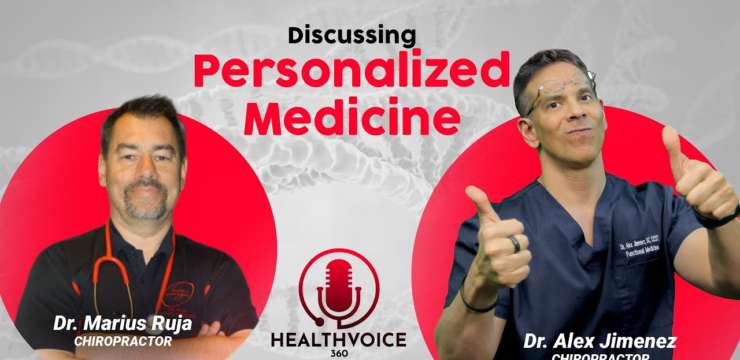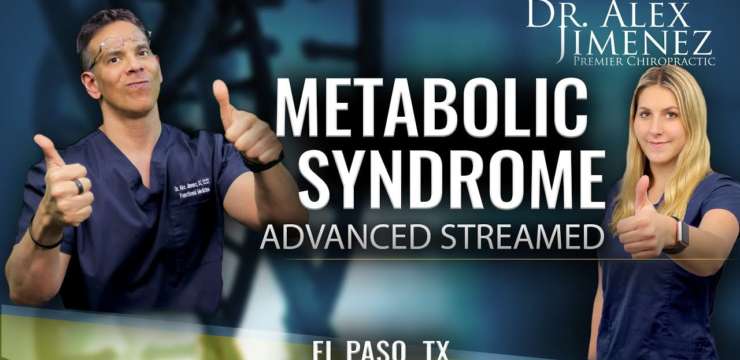
Discover effective methods to cope with auto injuries affecting the nervous system and promote recovery for a healthier future.
Table of Contents
Introduction
Imagine you’re cruising down the road, maybe humming along to your favorite tune, when bam!—a car rear-ends you. Your head snaps back and forth like it’s auditioning for a stunt double role. That’s whiplash, folks, and it’s no laughing matter. Whiplash is a common injury from motor vehicle accidents (MVAs), affecting millions each year in the United States alone. While most people think of neck pain when they hear “whiplash,” this injury can do a lot more than just make your neck sore. It can disrupt your nervous system, causing symptoms such as headaches, dizziness, and even memory problems. And here’s the plot twist: it can also lead to low back pain, even though the crash didn’t directly hit your back.
In this blog post, we’ll dive deep into the clinical reasons behind whiplash’s effects on the nervous system and its surprising connection to low back pain. We’ll explore how these injuries contribute to musculoskeletal problems, the symptoms you might face, and the nonsurgical treatments that can help you bounce back. Plus, we’ll spotlight Dr. Alexander Jimenez, a rockstar chiropractor and nurse practitioner in El Paso, who’s helping MVA victims recover while navigating the tricky world of personal injury cases. With a touch of humor to keep things light—think Uncle Fester from The Addams Family cracking jokes about neck pain—we’ll make this journey informative and engaging. So, let’s get started!
Understanding Whiplash
Whiplash, or cervical acceleration-deceleration (CAD) injury, is what happens when your neck gets a sudden, forceful jolt, usually from a rear-end collision. It’s like your head decides to go on a wild ride without asking your neck’s permission. The rapid movement stretches and tears the muscles, ligaments, and tendons in your neck, and sometimes even affects the bones and nerves.
Whiplash is classified into grades based on severity (Cleveland Clinic):
| Grade | Description |
|---|---|
| 0 | No symptoms or physical signs. |
| 1 | Neck pain and stiffness, no physical signs. |
| 2 | Neck pain, stiffness, and physical signs like reduced motion. |
| 3 | Neck pain, stiffness, and neurological symptoms (e.g., numbness). |
| 4 | Severe injuries, like fractures or dislocations. |
The injury typically occurs when your head is thrown backward (hyperextension) and then forward (flexion), or vice versa. This can happen in car crashes, sports accidents, or even on amusement park rides that go wrong. The force can damage not just your neck but also your spine’s alignment, setting the stage for broader issues like low back pain.
Effects of Whiplash on the Nervous System

Your nervous system is like the body’s Wi-Fi network, sending signals to keep everything connected. Whiplash can throw a wrench into this system, causing a range of neurological symptoms. The sudden force can lead to swelling or inflammation in the neck, which disrupts nerve signals. In severe cases (Grades 3 and 4), this can get pretty intense (Cleveland Clinic).
Here’s what you might notice (Mayo Clinic):
- Tingling or numbness in the arms: Like your arms are on a permanent snooze button.
- Headaches: Often starting at the base of your skull, these can feel like a tight band around your head.
- Dizziness: The room might spin like you’re on a merry-go-round.
- Blurred vision: Your eyes might feel like they need a software update.
- Tinnitus: A ringing in your ears that’s like an uninvited guest.
- Trouble focusing or memory issues: You might struggle to concentrate or forget where you parked your car.
- Depression: Chronic pain can weigh on your mood, making you feel blue.
Research suggests whiplash can lead to central sensitization, where your brain becomes hypersensitive to pain signals (ScienceDirect). It’s like your pain volume gets cranked up to 11. Studies using functional imaging (like fMRI and PET scans) have found changes in brain activity in people with whiplash-associated disorders (WADs), with increased blood flow in areas like the posterior cingulate cortex. This shows that whiplash isn’t just a neck injury—it can affect your brain, too.
Association with Low Back Pain
You might be thinking, “How does a neck injury make my lower back hurt?” Great question! The force of an MVA doesn’t just stop at your neck—it travels down your spine like a shockwave. Studies show that 35% of whiplash patients experience low back pain, and 20% report pain between their shoulder blades (ScienceDirect).
Here’s why this happens:
- Spinal Compensation: When your head snaps, your spine tries to stabilize itself, which can strain your thoracic (mid-back) and lumbar (lower back) regions.
- Inflammation Spread: The inflammation from your neck injury can spread, causing pain in other parts of your spine.
- Force Transmission: The impact of a crash can misalign your spine or damage discs in your lower back, leading to pain.
This connection is why low back pain is so common after MVAs, even if the crash didn’t directly hit your back. It’s like your spine is one big team, and when one player gets hurt, the whole team feels it.
Musculoskeletal Injuries and Symptoms
MVAs can cause a smorgasbord of musculoskeletal injuries, and whiplash is just the tip of the iceberg. Here are some common injuries (El Paso Back Clinic):
- Spinal Misalignments: These can lead to back pain, reduced mobility, and nerve impingement (when nerves get pinched, causing numbness or weakness).
- Herniated Discs: Discs in your spine can bulge or rupture, pressing on nerves and causing pain, numbness, or weakness.
- Soft Tissue Injuries: Sprains and strains in muscles, ligaments, and tendons can cause pain and swelling.
Symptoms of these injuries include:
- Pain (obviously!)
- Stiffness, like your body’s stuck in slow motion
- Swelling, as your body tries to protect the injured area
- Limited range of motion, making you feel like a creaky door
The tricky part? These symptoms may not appear immediately. It’s like a delayed email—sometimes it takes days or weeks for the pain to hit. That’s why getting checked out after an MVA is so important, even if you feel fine at first.
The Science of Motion- Video
Nonsurgical Treatments for Whiplash and Related Injuries
Good news: most whiplash and related injuries don’t require surgery. Nonsurgical treatments can be highly effective, especially when started early. Here’s what’s on the menu:
- Chiropractic Care: Chiropractors utilize spinal adjustments, muscle stimulation, and exercises to alleviate pain and restore normal movement. A 2019 study found that early spinal manipulation therapy (SMT) reduces the risk of chronic pain in patients with whiplash (European Spine Journal). Another study from 2020 showed that chiropractic care improved function and reduced pain in individuals with low back injuries resulting from motor vehicle accidents (Journal of Manipulative and Physiological Therapeutics).
- Physical therapy exercises and stretches strengthen muscles and improve flexibility, helping you recover more quickly.
- Massage Therapy: This can reduce muscle tension and improve blood flow, like a mini-vacation for your muscles.
- Acupuncture: Tiny needles are inserted into specific points to relieve pain and promote overall well-being and healing.
Early intervention is key. The sooner you start treatment, the less likely you are to develop chronic pain or long-term issues.
Dr. Alexander Jimenez: El Paso’s Personal Injury Expert
In El Paso, Dr. Alexander Jimenez is a beacon of hope for MVA victims. As a chiropractor and nurse practitioner, he brings a unique blend of skills to the table. He’s like the superhero of spine care, utilizing advanced imaging techniques (such as X-rays), diagnostic evaluations, and dual-scope procedures to pinpoint injuries and create personalized treatment plans (El Paso Back Clinic).
Dr. Jimenez’s approach is interdisciplinary, combining chiropractic adjustments with medical expertise to address both immediate symptoms and long-term healing. He specializes in treating whiplash and low back pain from MVAs, focusing on:
- Whiplash: Caused by rapid neck movement, it can lead to pain, stiffness, headaches, and cognitive issues. Early chiropractic care can prevent chronic pain.
- Low Back Pain: Often due to spinal misalignments or herniated discs, it responds well to chiropractic adjustments and manual therapies.
What sets Dr. Jimenez apart is his expertise in handling personal injury cases. He acts as a liaison between medical care and legal documentation, ensuring that injuries are properly documented and linked to the accident. This is crucial for victims seeking compensation, as it provides solid evidence for their claims. His expertise in advanced diagnostics and clinical documentation makes him a trusted partner for both patients and attorneys in El Paso.
A Dash of Humor: Uncle Fester’s Take
Let’s take a quick break for some levity, shall we? Picture Uncle Fester from The Addams Family trying to explain whiplash. He’d probably say, “Whiplash? That’s when your neck decides to do the hokey-pokey without you! Shake it up, snap it back, and suddenly you’re creaking like my old lightbulb socket!” Or maybe he’d compare it to a bad dance move: “One minute you’re grooving, the next your spine’s doing the twist—and not the fun kind!”
But in all seriousness, whiplash is a sneaky injury. It can creep up on you like a prankster in the dark, so don’t ignore it. Get to someone like Dr. Jimenez, who can fix your spine faster than Fester can light a bulb in his mouth.
Conclusion
Whiplash is more than just a neck injury—it’s a complex condition that can affect your nervous system, cause low back pain, and lead to a range of musculoskeletal issues. From tingling arms and headaches to spinal misalignments and herniated discs, the effects can be far-reaching. But with nonsurgical treatments like chiropractic care, physical therapy, and acupuncture, recovery is within reach. In El Paso, Dr. Alexander Jimenez is leading the charge, helping MVA victims heal while supporting their personal injury cases with expert diagnostics and documentation.
If you’ve been in a car accident, don’t wait for symptoms to show up. Seek care from a qualified professional like Dr. Jimenez to get back on track. Your spine—and your peace of mind—will thank you.
Disclaimer: This blog post is for informational purposes only and should not be taken as medical advice. Always consult with a qualified healthcare professional for diagnosis and treatment of any medical condition.
Key Citations
- Whiplash: Symptoms and Causes
- Whiplash Injury Overview
- Whiplash Injury ScienceDirect
- Auto Injuries El Paso Back Clinic
- Effectiveness of Exercise Therapy
- Manipulation for Chronic Low Back Pain
Disclaimer
Disclaimers
Professional Scope of Practice *
The information herein on "Auto Injuries and Preventive Measures for the Nervous System" is not intended to replace a one-on-one relationship with a qualified health care professional or licensed physician and is not medical advice. We encourage you to make healthcare decisions based on your research and partnership with a qualified healthcare professional.
Blog Information & Scope Discussions
Welcome to El Paso's wellness blog, where Dr. Alex Jimenez, DC, FNP-C, a board-certified Family Practice Nurse Practitioner (FNP-C) and Chiropractor (DC), presents insights on how our team is dedicated to holistic healing and personalized care. Our practice aligns with evidence-based treatment protocols inspired by integrative medicine principles, similar to those found on dralexjimenez.com, focusing on restoring health naturally for patients of all ages.
Our areas of chiropractic practice include Wellness & Nutrition, Chronic Pain, Personal Injury, Auto Accident Care, Work Injuries, Back Injury, Low Back Pain, Neck Pain, Migraine Headaches, Sports Injuries, Severe Sciatica, Scoliosis, Complex Herniated Discs, Fibromyalgia, Chronic Pain, Complex Injuries, Stress Management, Functional Medicine Treatments, and in-scope care protocols.
Our information scope is limited to chiropractic, musculoskeletal, physical medicine, wellness, contributing etiological viscerosomatic disturbances within clinical presentations, associated somato-visceral reflex clinical dynamics, subluxation complexes, sensitive health issues, and functional medicine articles, topics, and discussions.
We provide and present clinical collaboration with specialists from various disciplines. Each specialist is governed by their professional scope of practice and their jurisdiction of licensure. We use functional health & wellness protocols to treat and support care for the injuries or disorders of the musculoskeletal system.
Our videos, posts, topics, subjects, and insights cover clinical matters, issues, and topics that relate to and directly or indirectly support our clinical scope of practice.*
Our office has reasonably attempted to provide supportive citations and has identified the relevant research studies or studies supporting our posts. We provide copies of supporting research studies available to regulatory boards and the public upon request.
We understand that we cover matters that require an additional explanation of how they may assist in a particular care plan or treatment protocol; therefore, to discuss the subject matter above further, please feel free to ask Dr. Alex Jimenez, DC, APRN, FNP-BC, or contact us at 915-850-0900.
We are here to help you and your family.
Blessings
Dr. Alex Jimenez DC, MSACP, APRN, FNP-BC*, CCST, IFMCP, CFMP, ATN
email: coach@elpasofunctionalmedicine.com
Licensed as a Doctor of Chiropractic (DC) in Texas & New Mexico*
Texas DC License # TX5807
New Mexico DC License # NM-DC2182
Licensed as a Registered Nurse (RN*) in Texas & Multistate
Texas RN License # 1191402
ANCC FNP-BC: Board Certified Nurse Practitioner*
Compact Status: Multi-State License: Authorized to Practice in 40 States*
Graduate with Honors: ICHS: MSN-FNP (Family Nurse Practitioner Program)
Degree Granted. Master's in Family Practice MSN Diploma (Cum Laude)
Dr. Alex Jimenez, DC, APRN, FNP-BC*, CFMP, IFMCP, ATN, CCST
My Digital Business Card






